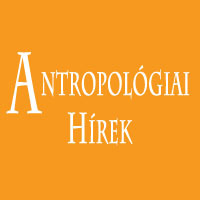Rare 10 million-year-old fossil unearths new view of human evolution
https://phys.org/news/2019-09-rare-million-year-old-fossil-unearths-view.html
Több száz neandervölgyi lábnyomot találtak Franciaországban
https://mult-kor.hu/tbb-szaz-neandervlgyi-labnyomot-talaltak-franciaorszagban-20190911
Following Neanderthals' footsteps to learn how they lived
https://phys.org/news/2019-09-neanderthals-footsteps.html
13th century mass graves filled with victims of Mongol invaders found in Russia
https://archaeologynewsnetwork.blogspot.com/2019/09/13th-century-mass-graves-filled-with.html
What the cranium of modern humans' ancestor would have looked like
https://archaeologynewsnetwork.blogspot.com/2019/09/what-cranium-of-modern-humans-ancestor.html
Unique grave of Roman-era warlord found in Czech Republic
http://www.thehistoryblog.com/archives/56411
Early humans used tiny, flint 'surgical' tools to butcher elephants
https://phys.org/news/2019-09-early-humans-tiny-flint-surgical.html
A neandervölgyi helyett a modern emberéhez állt közelebb a gyenyiszovai ember ujja
https://mult-kor.hu/a-neandervlgyi-helyett-a-modern-emberehez-allt-kzelebb-a-gyenyiszovai-ember-ujja-20190909
Grave with six skulls thought to be clan feud burial site
https://archaeologynewsnetwork.blogspot.com/2019/09/grave-with-six-skulls-thought-to-be.html
Unveiling of 'Calpeia' – the face of a 7500-year-old Gibraltarian woman
https://archaeologynewsnetwork.blogspot.com/2019/09/unveiling-of-calpeia-face-of-7500-year.html
Érdekes
Germanic prince probably died of Hep B
http://www.thehistoryblog.com/archives/56401
Bones of Roman Britons provide new clues to dietary deprivation
https://phys.org/news/2019-09-bones-roman-britons-clues-dietary.html
Forensic proteomics, a new tool for crime labs and anthropology
https://phys.org/news/2019-09-forensic-proteomics-tool-crime-labs.html
Teeth offer vital clues about diet during the Great Irish Famine
https://archaeologynewsnetwork.blogspot.com/2019/09/teeth-offer-vital-clues-about-diet.html
Livestock transport could signify close ties between humans and animals in the Bronze Age
https://phys.org/news/2019-09-livestock-signify-ties-humans-animals.html
Ancient “Lovers of Modena” are both men
http://www.thehistoryblog.com/archives/56420
Roman-era 'lovers of Modena', buried hand-in-hand, were men
https://archaeologynewsnetwork.blogspot.com/2019/09/roman-era-lovers-of-modena-buried-hand.html
A „modenai szerelmesek” mindketten férfiak voltak
https://mult-kor.hu/amodenai-szerelmesek-mindketten-ferfiak-voltak-20190914


